Chapter 11: Monohybrid Cross. Higher Human Biology





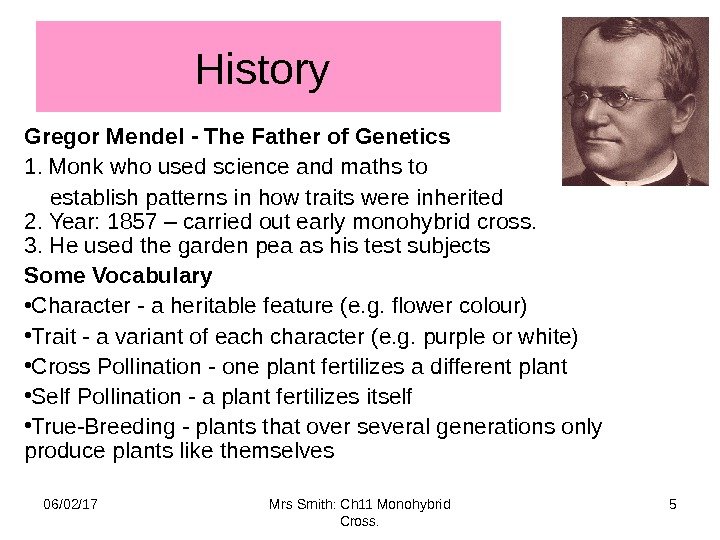



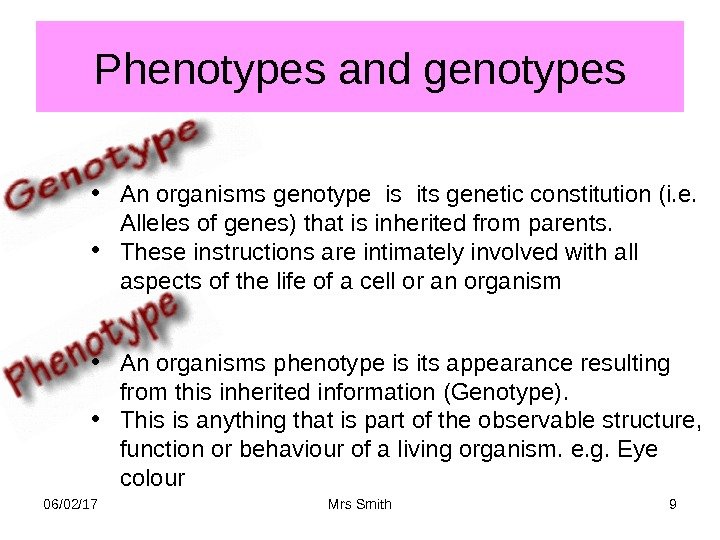


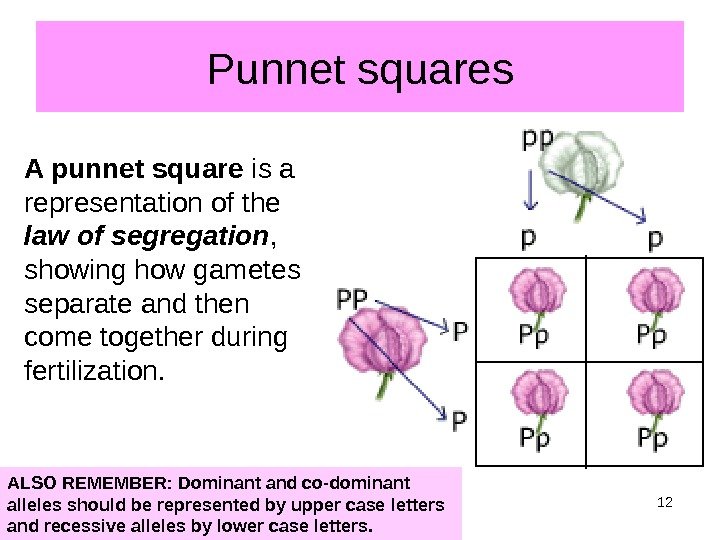



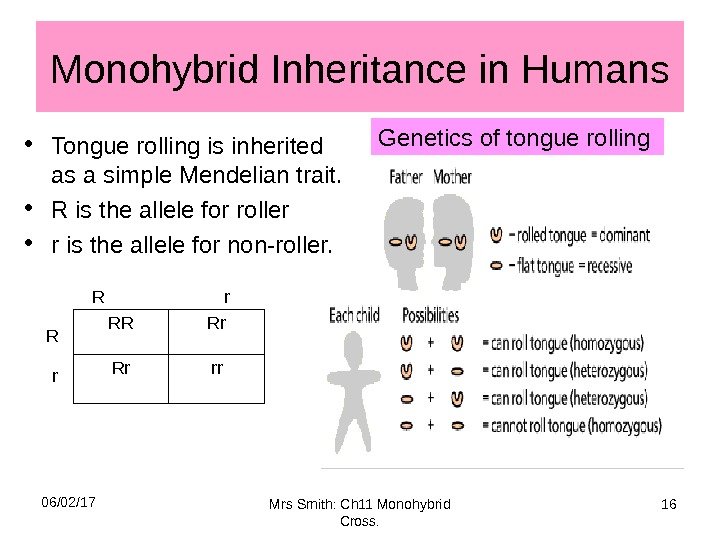
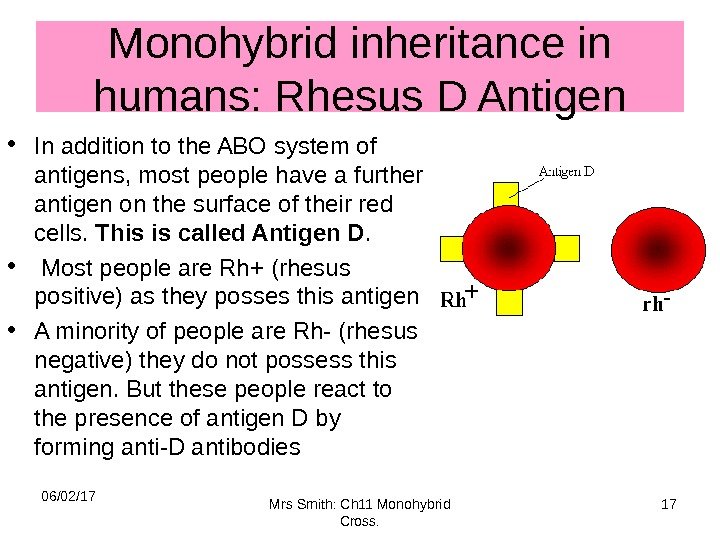


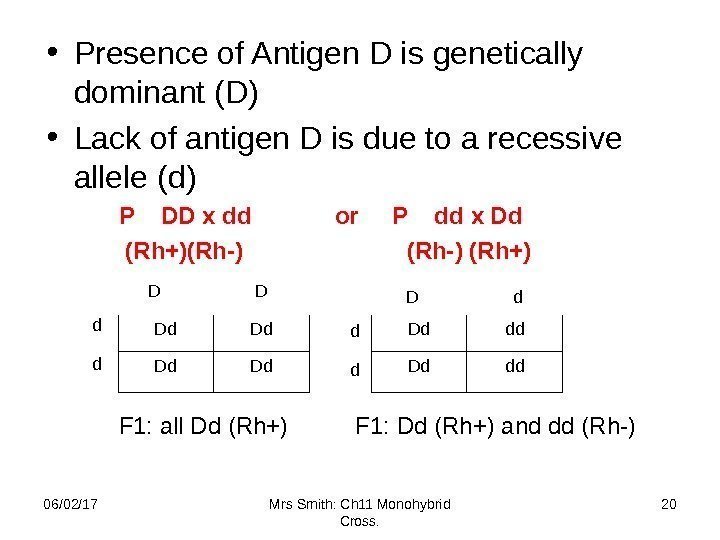






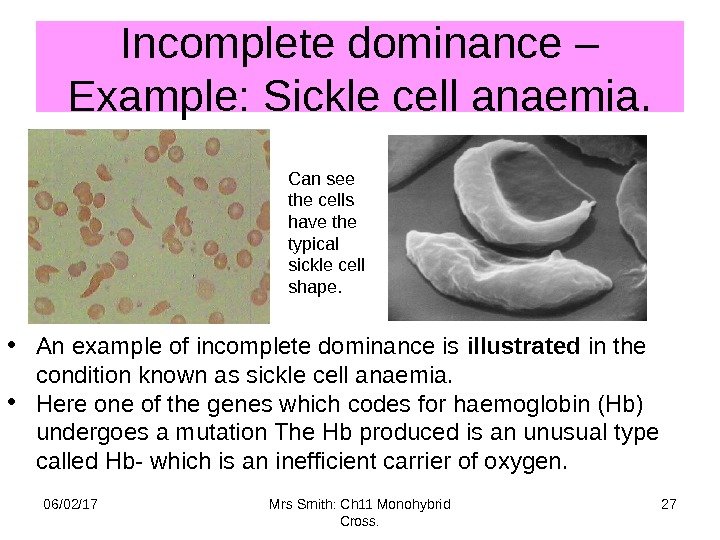







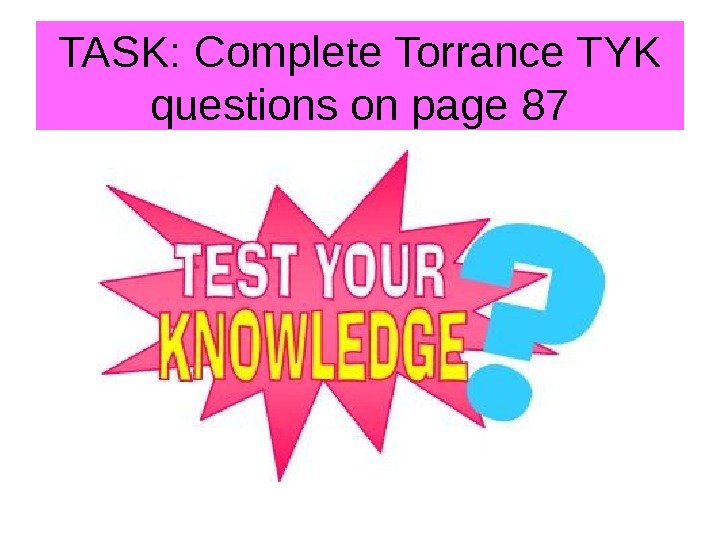
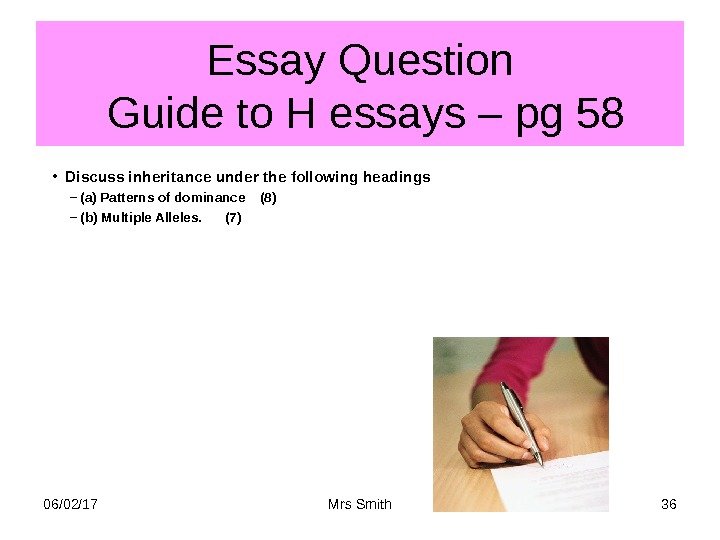

botakoz_slayd.ppt
- Размер: 1.2 Мб
- Автор: Ботакоз Дели
- Количество слайдов: 37
Описание презентации Chapter 11: Monohybrid Cross. Higher Human Biology по слайдам
 Chapter 11: Monohybrid Cross. Higher Human Biology Unit 1: Cell Function and Inheritance 06/02/17 1 Mrs Smith: Ch 11 Monohybrid Cross.
Chapter 11: Monohybrid Cross. Higher Human Biology Unit 1: Cell Function and Inheritance 06/02/17 1 Mrs Smith: Ch 11 Monohybrid Cross.
 Lesson Aims • To revise and consolidate understanding of monohybrid crosses • To examine Rhesus and Rhesus- blood groups • To learn about different conditions caused by genetic mutations • To find out the difference between incomplete dominance and co-dominance 06/02/17 2 Mrs Smith: Ch 11 Monohybrid Cross.
Lesson Aims • To revise and consolidate understanding of monohybrid crosses • To examine Rhesus and Rhesus- blood groups • To learn about different conditions caused by genetic mutations • To find out the difference between incomplete dominance and co-dominance 06/02/17 2 Mrs Smith: Ch 11 Monohybrid Cross.
 You need to know these words 06/02/17 Mrs Smith: Ch 11 Monohybrid Cross.
You need to know these words 06/02/17 Mrs Smith: Ch 11 Monohybrid Cross.
 Things you need to know Monohybrid inheritance i The pattern of inheritance of a pair of alleles where one is dominant and one is recessive. ii The effects of alleles exhibiting dominance, co-dominance and incomplete dominance. iii Possible combinations of multiple alleles. 06/02/17 Mrs Smith: Ch 11 Monohybrid Cross. 4 ALSO REMEMBER: Dominant and co-dominant alleles should be represented by upper case letters and recessive alleles by lower case letters.
Things you need to know Monohybrid inheritance i The pattern of inheritance of a pair of alleles where one is dominant and one is recessive. ii The effects of alleles exhibiting dominance, co-dominance and incomplete dominance. iii Possible combinations of multiple alleles. 06/02/17 Mrs Smith: Ch 11 Monohybrid Cross. 4 ALSO REMEMBER: Dominant and co-dominant alleles should be represented by upper case letters and recessive alleles by lower case letters.
 History Gregor Mendel — The Father of Genetics 1. Monk who used science and maths to establish patterns in how traits were inherited 2. Year: 1857 – carried out early monohybrid cross. 3. He used the garden pea as his test subjects Some Vocabulary • Character — a heritable feature (e. g. flower colour) • Trait — a variant of each character (e. g. purple or white) • Cross Pollination — one plant fertilizes a different plant • Self Pollination — a plant fertilizes itself • True-Breeding — plants that over several generations only produce plants like themselves 06/02/17 5 Mrs Smith: Ch 11 Monohybrid Cross.
History Gregor Mendel — The Father of Genetics 1. Monk who used science and maths to establish patterns in how traits were inherited 2. Year: 1857 – carried out early monohybrid cross. 3. He used the garden pea as his test subjects Some Vocabulary • Character — a heritable feature (e. g. flower colour) • Trait — a variant of each character (e. g. purple or white) • Cross Pollination — one plant fertilizes a different plant • Self Pollination — a plant fertilizes itself • True-Breeding — plants that over several generations only produce plants like themselves 06/02/17 5 Mrs Smith: Ch 11 Monohybrid Cross.
 Monohybrid cross. • A cross between two parents who possess different forms of a gene referred to as a MONOHYBRID INHERITANCE. 06/02/17 Mrs Smith: Ch 11 Monohybrid Cross.
Monohybrid cross. • A cross between two parents who possess different forms of a gene referred to as a MONOHYBRID INHERITANCE. 06/02/17 Mrs Smith: Ch 11 Monohybrid Cross.
 Mendel’s Experiments — Monohybrid Cross (pea plant cross). • Monohybrid Cross: involved plants that differed for a single character: tall x short, purple flower x white flower, round seed x wrinkled seed. • P (Parental Generation): True breeding plants • F 1 (First Filial): The offspring of the P generation —> they always displayed a single trait, the dominant one. • F 2 (Second Filial): The offspring of the F 1 generation, self fertilized —> always had a 3: 1 ratio. 06/02/17 7 Mrs Smith: Ch 11 Monohybrid Cross.
Mendel’s Experiments — Monohybrid Cross (pea plant cross). • Monohybrid Cross: involved plants that differed for a single character: tall x short, purple flower x white flower, round seed x wrinkled seed. • P (Parental Generation): True breeding plants • F 1 (First Filial): The offspring of the P generation —> they always displayed a single trait, the dominant one. • F 2 (Second Filial): The offspring of the F 1 generation, self fertilized —> always had a 3: 1 ratio. 06/02/17 7 Mrs Smith: Ch 11 Monohybrid Cross.
 Pea plant cross • Since wrinkled seeds were absent in the F 1 and reappears in the F 2 , ‘something has to be transmitted undetected in the gametes from generation to generation. Today we call this a GENE. In this case it is a gene for seed shape, which has two alleles , round and wrinkled. • Since the presence of round allele masks the presence of the wrinkled allele, round is said to be DOMINANT and wrinkled RESSESSIVE. 06/02/17 Mrs Smith: Ch 11 Monohybrid Cross. 8 Parent plant true breeding for round seeds x Parent plant true breeding for wrinkled First filial generation (F 1 )– ALL ROUND SEEDS Self-pollination Second filial generation (F 2 ) – 3 ROUND: 1 WRINKLED SEEDS Cross-pollination
Pea plant cross • Since wrinkled seeds were absent in the F 1 and reappears in the F 2 , ‘something has to be transmitted undetected in the gametes from generation to generation. Today we call this a GENE. In this case it is a gene for seed shape, which has two alleles , round and wrinkled. • Since the presence of round allele masks the presence of the wrinkled allele, round is said to be DOMINANT and wrinkled RESSESSIVE. 06/02/17 Mrs Smith: Ch 11 Monohybrid Cross. 8 Parent plant true breeding for round seeds x Parent plant true breeding for wrinkled First filial generation (F 1 )– ALL ROUND SEEDS Self-pollination Second filial generation (F 2 ) – 3 ROUND: 1 WRINKLED SEEDS Cross-pollination
 Phenotypes and genotypes 06/02/17 Mrs Smith 9 • An organisms phenotype is its appearance resulting from this inherited information (Genotype). • This is anything that is part of the observable structure, function or behaviour of a living organism. e. g. Eye colour • An organisms genotype is its genetic constitution (i. e. Alleles of genes) that is inherited from parents. • These instructions are intimately involved with all aspects of the life of a cell or an organism
Phenotypes and genotypes 06/02/17 Mrs Smith 9 • An organisms phenotype is its appearance resulting from this inherited information (Genotype). • This is anything that is part of the observable structure, function or behaviour of a living organism. e. g. Eye colour • An organisms genotype is its genetic constitution (i. e. Alleles of genes) that is inherited from parents. • These instructions are intimately involved with all aspects of the life of a cell or an organism
 Mendel’s Law of Segregation • States…The alleles of a gene exist in pairs but hen gametes are formed, the members if each pair pass into different gametes. Thus each gamete contains only one allele of each gene. – For example a Tt parent can produce both T sperm, and t sperm. 06/02/17 10 Mrs Smith: Ch 11 Monohybrid Cross.
Mendel’s Law of Segregation • States…The alleles of a gene exist in pairs but hen gametes are formed, the members if each pair pass into different gametes. Thus each gamete contains only one allele of each gene. – For example a Tt parent can produce both T sperm, and t sperm. 06/02/17 10 Mrs Smith: Ch 11 Monohybrid Cross.
 Locus — spot on the chromosome where an allele (gene) is located. 06/02/17 11 Mrs Smith: Ch 11 Monohybrid Cross.
Locus — spot on the chromosome where an allele (gene) is located. 06/02/17 11 Mrs Smith: Ch 11 Monohybrid Cross.
 Punnet squares A punnet square is a representation of the law of segregation , showing how gametes separate and then come together during fertilization. 06/02/17 Mrs Smith: Ch 11 Monohybrid Cross. 12 ALSO REMEMBER: Dominant and co-dominant alleles should be represented by upper case letters and recessive alleles by lower case letters.
Punnet squares A punnet square is a representation of the law of segregation , showing how gametes separate and then come together during fertilization. 06/02/17 Mrs Smith: Ch 11 Monohybrid Cross. 12 ALSO REMEMBER: Dominant and co-dominant alleles should be represented by upper case letters and recessive alleles by lower case letters.
 Homozygous and Heterozygous • When an individual possesses two similar alleles of a gene (e. g. R and R or r and r), its genotype is said to be HOMOZYGOUS (true-breeding) and all of it’s gametes are identical with respect to that characteristic. • When an individual possesses two different alleles of a gene (e. g. R and r), its genotype is said to be HETEROZYGOUS. It produces two different types of gamete with respect to that characteristic. 06/02/17 Mrs Smith: Ch 11 Monohybrid Cross.
Homozygous and Heterozygous • When an individual possesses two similar alleles of a gene (e. g. R and R or r and r), its genotype is said to be HOMOZYGOUS (true-breeding) and all of it’s gametes are identical with respect to that characteristic. • When an individual possesses two different alleles of a gene (e. g. R and r), its genotype is said to be HETEROZYGOUS. It produces two different types of gamete with respect to that characteristic. 06/02/17 Mrs Smith: Ch 11 Monohybrid Cross.
 Task: Torrance pg 83 Qu’s 1 —
Task: Torrance pg 83 Qu’s 1 —
 06/02/17 Mrs Smith 15 CAN YOU ROLL YOUR TOUNGE?
06/02/17 Mrs Smith 15 CAN YOU ROLL YOUR TOUNGE?
 Monohybrid Inheritance in Humans • Tongue rolling is inherited as a simple Mendelian trait. • R is the allele for roller • r is the allele for non-roller. 06/02/17 16 Mrs Smith: Ch 11 Monohybrid Cross. Genetics of tongue rolling RR Rr Rr rr. R R r r
Monohybrid Inheritance in Humans • Tongue rolling is inherited as a simple Mendelian trait. • R is the allele for roller • r is the allele for non-roller. 06/02/17 16 Mrs Smith: Ch 11 Monohybrid Cross. Genetics of tongue rolling RR Rr Rr rr. R R r r
 Monohybrid inheritance in humans: Rhesus D Antigen • In addition to the ABO system of antigens, most people have a further antigen on the surface of their red cells. This is called Antigen D. • Most people are Rh+ (rhesus positive) as they posses this antigen • A minority of people are Rh- (rhesus negative) they do not possess this antigen. But these people react to the presence of antigen D by forming anti-D antibodies 06/02/17 17 Mrs Smith: Ch 11 Monohybrid Cross.
Monohybrid inheritance in humans: Rhesus D Antigen • In addition to the ABO system of antigens, most people have a further antigen on the surface of their red cells. This is called Antigen D. • Most people are Rh+ (rhesus positive) as they posses this antigen • A minority of people are Rh- (rhesus negative) they do not possess this antigen. But these people react to the presence of antigen D by forming anti-D antibodies 06/02/17 17 Mrs Smith: Ch 11 Monohybrid Cross.
 Rhesus D Antigen Con’t • If a Rh- person is given Rh+ red blood cells during a transfusion the persons immune system responds by producing anti-D antibodies. This leaves the person sensitised. • If this person receives more Rh+ red blood cells they suffer from severe or fatal agglutination. 06/02/17 18 Mrs Smith: Ch 11 Monohybrid Cross.
Rhesus D Antigen Con’t • If a Rh- person is given Rh+ red blood cells during a transfusion the persons immune system responds by producing anti-D antibodies. This leaves the person sensitised. • If this person receives more Rh+ red blood cells they suffer from severe or fatal agglutination. 06/02/17 18 Mrs Smith: Ch 11 Monohybrid Cross.
 Agglutination of Red Blood Cells 06/02/17 19 Mrs Smith: Ch 11 Monohybrid Cross.
Agglutination of Red Blood Cells 06/02/17 19 Mrs Smith: Ch 11 Monohybrid Cross.
 • Presence of Antigen D is genetically dominant (D) • Lack of antigen D is due to a recessive allele (d) P DD x dd or P dd x Dd (Rh+)(Rh-) (Rh-) (Rh+) F 1: all Dd (Rh+) F 1: Dd (Rh+) and dd (Rh-) 06/02/17 20 Mrs Smith: Ch 11 Monohybrid Cross. Dd Dd. D d Dd dd. D d d d
• Presence of Antigen D is genetically dominant (D) • Lack of antigen D is due to a recessive allele (d) P DD x dd or P dd x Dd (Rh+)(Rh-) (Rh-) (Rh+) F 1: all Dd (Rh+) F 1: Dd (Rh+) and dd (Rh-) 06/02/17 20 Mrs Smith: Ch 11 Monohybrid Cross. Dd Dd. D d Dd dd. D d d d
 Examples RECESSIVE monohybrid inheritance in humans • Albinism — inability of the body to make melanin — inherited as simple Mendelian recessive trait. • Cystic Fibrosis — disorder of the mucus secreting glands — simple Mendelian recessive trait. . • PKU – inborn error of metabolism – simple Mendelain recessive trait 06/02/17 21 Mrs Smith: Ch 11 Monohybrid Cross.
Examples RECESSIVE monohybrid inheritance in humans • Albinism — inability of the body to make melanin — inherited as simple Mendelian recessive trait. • Cystic Fibrosis — disorder of the mucus secreting glands — simple Mendelian recessive trait. . • PKU – inborn error of metabolism – simple Mendelain recessive trait 06/02/17 21 Mrs Smith: Ch 11 Monohybrid Cross.
 Huntingdon’s Chorea • Degeneration of the nervous system which leads to premature death. • Determined by dominant allele. • Allele not expressed in phenotype until about 38 years of age when sufferer will probably have had a family and passed on the allele. 06/02/17 22 Mrs Smith: Ch 11 Monohybrid Cross. Example of a DOMINANT monohybrid inheritance in humans
Huntingdon’s Chorea • Degeneration of the nervous system which leads to premature death. • Determined by dominant allele. • Allele not expressed in phenotype until about 38 years of age when sufferer will probably have had a family and passed on the allele. 06/02/17 22 Mrs Smith: Ch 11 Monohybrid Cross. Example of a DOMINANT monohybrid inheritance in humans
 Huntington’s Chorea – The genetics • H = allele for Huntington’s, h = allele for normal condition • 5 combinations HH x HH , HH x Hh , Hh x Hh, HH x hh , hh x hh. • HH x HH all offspring HH – none survive • HH x Hh offspring HH, HH, Hh – None survive • Hh x Hh offspring HH, Hh, hh – 75% don’t survive (hh lives) 06/02/17 Mrs Smith: Ch 11 Monohybrid Cross.
Huntington’s Chorea – The genetics • H = allele for Huntington’s, h = allele for normal condition • 5 combinations HH x HH , HH x Hh , Hh x Hh, HH x hh , hh x hh. • HH x HH all offspring HH – none survive • HH x Hh offspring HH, HH, Hh – None survive • Hh x Hh offspring HH, Hh, hh – 75% don’t survive (hh lives) 06/02/17 Mrs Smith: Ch 11 Monohybrid Cross.
 Huntington’s Chorea – The genetics • H = allele for Huntington’s, h = allele for normal condition • Most likely combination Hh (but doesn’t know yet: breeds with hh. . . . • Potentially tragic situation 1 in 2 inherit condition. • Hh x hh — offspring = Hh, hh, hh – 50% don’t survive (hh lives) – but no one will know till mid thirties. 06/02/17 Mrs Smith: Ch 11 Monohybrid Cross.
Huntington’s Chorea – The genetics • H = allele for Huntington’s, h = allele for normal condition • Most likely combination Hh (but doesn’t know yet: breeds with hh. . . . • Potentially tragic situation 1 in 2 inherit condition. • Hh x hh — offspring = Hh, hh, hh – 50% don’t survive (hh lives) – but no one will know till mid thirties. 06/02/17 Mrs Smith: Ch 11 Monohybrid Cross.
 Task: Torrance pg 85 Qu’s a-h
Task: Torrance pg 85 Qu’s a-h
 Incomplete Dominance • Sometimes one allele is not completely dominant over the other, • Occurs when the recessive allele has some effect on the heterozygote. • Here the heterozygote exhibits a phenotype which is different from both of the hetrozygotes. – e. g. • Sickle Cell Anaemia • Resistance to malaria 06/02/17 26 Mrs Smith: Ch 11 Monohybrid Cross.
Incomplete Dominance • Sometimes one allele is not completely dominant over the other, • Occurs when the recessive allele has some effect on the heterozygote. • Here the heterozygote exhibits a phenotype which is different from both of the hetrozygotes. – e. g. • Sickle Cell Anaemia • Resistance to malaria 06/02/17 26 Mrs Smith: Ch 11 Monohybrid Cross.
 Incomplete dominance – Example: Sickle cell anaemia. 06/02/17 27 Mrs Smith: Ch 11 Monohybrid Cross. • An example of incomplete dominance is illustrated in the condition known as sickle cell anaemia. • Here one of the genes which codes for haemoglobin (Hb) undergoes a mutation The Hb produced is an unusual type called Hb- which is an inefficient carrier of oxygen. Can see the cells have the typical sickle cell shape.
Incomplete dominance – Example: Sickle cell anaemia. 06/02/17 27 Mrs Smith: Ch 11 Monohybrid Cross. • An example of incomplete dominance is illustrated in the condition known as sickle cell anaemia. • Here one of the genes which codes for haemoglobin (Hb) undergoes a mutation The Hb produced is an unusual type called Hb- which is an inefficient carrier of oxygen. Can see the cells have the typical sickle cell shape.
 Homozygous for the mutant allele: SS Homozygous for the mutant allele: SS • Disastrous consequences, sufferers SICKLE CELLED ANAEMIA , they have the abnormally shaped sickle cell blood, RBC’s fail to perform function well. • Causes shortage of oxygen, damage of internal organs and in many cases death. 06/02/17 Mrs Smith: Ch 11 Monohybrid Cross. 28 Picture shows blood containing only Haemoglobin wit the Sickle shape.
Homozygous for the mutant allele: SS Homozygous for the mutant allele: SS • Disastrous consequences, sufferers SICKLE CELLED ANAEMIA , they have the abnormally shaped sickle cell blood, RBC’s fail to perform function well. • Causes shortage of oxygen, damage of internal organs and in many cases death. 06/02/17 Mrs Smith: Ch 11 Monohybrid Cross. 28 Picture shows blood containing only Haemoglobin wit the Sickle shape.
 Heterozygous for the mutant allele: HS (H=normal S=sickle both uppercase because neither is dominant) – Do not suffer from Sickle Cell Anaemia, – Instead RBC’s contain both forms of Hb – giving a milder condition called SICKLE CELL TRAIT. – Causes slight anaemia, which does not prevent moderate activity. 06/02/17 Mrs Smith: Ch 11 Monohybrid Cross. 29 Heterozygous for the mutant allele: Picture shows blood containing both forms of Haemoglobin (although the mutant cells are not completely sickle) This ‘in-between’ situation where the mutant allele is partially expressed, neither allele is completely dominant over the other
Heterozygous for the mutant allele: HS (H=normal S=sickle both uppercase because neither is dominant) – Do not suffer from Sickle Cell Anaemia, – Instead RBC’s contain both forms of Hb – giving a milder condition called SICKLE CELL TRAIT. – Causes slight anaemia, which does not prevent moderate activity. 06/02/17 Mrs Smith: Ch 11 Monohybrid Cross. 29 Heterozygous for the mutant allele: Picture shows blood containing both forms of Haemoglobin (although the mutant cells are not completely sickle) This ‘in-between’ situation where the mutant allele is partially expressed, neither allele is completely dominant over the other
 Resistance to malaria (HS genotype) • The S is rare in most populations. • However, in some parts of Africa up to 40% of the population has the heterozygous genotype HS. • This is because the parasite cannon make use of the RBC’s containing haemoglobin S. • People with the normal homozygous genotype HH are susceptible to malaria (and may die). 06/02/17 Mrs Smith: Ch 11 Monohybrid Cross.
Resistance to malaria (HS genotype) • The S is rare in most populations. • However, in some parts of Africa up to 40% of the population has the heterozygous genotype HS. • This is because the parasite cannon make use of the RBC’s containing haemoglobin S. • People with the normal homozygous genotype HH are susceptible to malaria (and may die). 06/02/17 Mrs Smith: Ch 11 Monohybrid Cross.
 Co-dominance • Describes the situation where two alleles can be expressed in the heterozygote, neither suppressing the other, e. g. MN blood grouping. • Blood groups are determined by the presence of antigens on the surface of RBC’s. • In addition to the ABO and Rhesus D-Antigen system, a further example is the MN blood group system. 06/02/17 31 Mrs Smith: Ch 11 Monohybrid Cross.
Co-dominance • Describes the situation where two alleles can be expressed in the heterozygote, neither suppressing the other, e. g. MN blood grouping. • Blood groups are determined by the presence of antigens on the surface of RBC’s. • In addition to the ABO and Rhesus D-Antigen system, a further example is the MN blood group system. 06/02/17 31 Mrs Smith: Ch 11 Monohybrid Cross.
 MN Blood Group • Controlled by two alleles M and N which are co-dominant (both alleles expressed in the phenotype of the heterozygote). • Heterozygous MN blood group have both M and N antigens on rbc • Homozygous MM blood group have M antigens on rbc • Homozygous NN blood group have N antigens on rbc 06/02/17 32 Mrs Smith: Ch 11 Monohybrid Cross.
MN Blood Group • Controlled by two alleles M and N which are co-dominant (both alleles expressed in the phenotype of the heterozygote). • Heterozygous MN blood group have both M and N antigens on rbc • Homozygous MM blood group have M antigens on rbc • Homozygous NN blood group have N antigens on rbc 06/02/17 32 Mrs Smith: Ch 11 Monohybrid Cross.
 Multiple Alleles • Each of the genes considered so far has two alleles ( which display complete, incomplete or co-dominance). • Some genes are found to possess 3 or more different alleles for a certain characteristic. . It has multiple alleles. • If 3 alleles of a gene exist, and since a diploid individual has 1 or 2 of these alleles, then there are 6 genotype combinations possible. • The phenotype depends on whether the alleles are complete, incomplete or co-dominant. 06/02/17 Mrs Smith: Ch 11 Monohybrid Cross.
Multiple Alleles • Each of the genes considered so far has two alleles ( which display complete, incomplete or co-dominance). • Some genes are found to possess 3 or more different alleles for a certain characteristic. . It has multiple alleles. • If 3 alleles of a gene exist, and since a diploid individual has 1 or 2 of these alleles, then there are 6 genotype combinations possible. • The phenotype depends on whether the alleles are complete, incomplete or co-dominant. 06/02/17 Mrs Smith: Ch 11 Monohybrid Cross.
 ABO Blood Group Antigens coded by a gene that has three alleles A, B and O. 6 possible genotypes: AA, AO, BB, BO, AB, OO 4 Phenotypes, A, B, A&B, or Neither A or B. . . • Allele A produces antigen A. • Allele B produces antigen B. • Allele O produces no antigens. • Alleles A and B are co-dominant to one another and completely dominant over allele O. 06/02/17 34 Mrs Smith: Ch 11 Monohybrid Cross.
ABO Blood Group Antigens coded by a gene that has three alleles A, B and O. 6 possible genotypes: AA, AO, BB, BO, AB, OO 4 Phenotypes, A, B, A&B, or Neither A or B. . . • Allele A produces antigen A. • Allele B produces antigen B. • Allele O produces no antigens. • Alleles A and B are co-dominant to one another and completely dominant over allele O. 06/02/17 34 Mrs Smith: Ch 11 Monohybrid Cross.
 TASK: Complete Torrance TYK questions on page
TASK: Complete Torrance TYK questions on page
 Essay Question Guide to H essays – pg 58 • Discuss inheritance under the following headings – (a) Patterns of dominance (8) – (b) Multiple Alleles. (7) 06/02/17 Mrs Smith
Essay Question Guide to H essays – pg 58 • Discuss inheritance under the following headings – (a) Patterns of dominance (8) – (b) Multiple Alleles. (7) 06/02/17 Mrs Smith
 Essay Question – Guide to H essays – pg 58 • Discuss monohybrid inheritance in humans. (15) 06/02/17 Mrs Smith
Essay Question – Guide to H essays – pg 58 • Discuss monohybrid inheritance in humans. (15) 06/02/17 Mrs Smith

